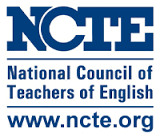Leadership: Build Commitment!
Leaders who can build commitment towards a well-articulated vision and common goals have much better odds of achieving success. Whether you are a principal, executive, teacher, or coach you will face choices that define your leadership, communicate your core values, and the values of your school or organization. Your choices have the ability to draw people to you, away from you, or cause people to fear you. This is a big responsibility, and one of the many that come with any leadership position.
One’s position, at times, can allow the use of positional authority to make someone do something. Beware the lure of positional authority; making people do things does not build commitment. Many times people need a job and will allow themselves to be treated poorly just because they need the job. Such a style of autocratic leadership will never build a staff committed to a vision and goals. This is compliance based leadership. Yes, it makes people “do” things but it cannot make people care.
Effective leaders, schools, and organizations build commitment to a vision, goals, and their personal “why.” Effective leaders know that people who care and are committed to a vision and goals are always better team members.
I will present several reflections on how well you, your school or organization are building an environment of commitment VS an environment of compliance. Let’s start with what you have the most control over, yourself, followed by your school or organization.
A Personal Path
Would people with whom you work say you are trustworthy, a person of integrity? This is a complex question, at the core a repetition of you doing what you say you will do time and time again. Such consistency of the leader helps to build trust and organizational commitment. This strategy and skill will help a leader, assuming the leader is making decisions in alignment with a shared vision and goals. Without trust, you cannot lead. Lack of trust grows when people see or feel a disconnect between what you say and what you do.
- As an educator, if you believe in putting students first, and I hope you do, ask yourself: Do your actions support this belief or create contradictions?
- Are you making daily decisions that are in alignment with a shared vision and goals or in opposition?
- A simple but important question: Do you know what the vision and goals are?
An Organizational Path
On an organizational level, the organization and leaders within will be collectively challenged when employees see a disconnect between what the organization communicates as its core values and the actions of those who lead in the organization. This type of disconnect can breed a cynical attitude from the employee and will not lead to creating a commitment to the values and beliefs of the organization.
- Is there congruence or disconnects between the vision and goals of your school or organization and how employees view the vision and goals?
- What can you do, as a leader, to help create better alignment between what is communicated organizationally and how staff perceives it?
- Do employees know the vision and have a general understanding of the goals?
No organization, school, or person will find greatness by making people do things. Such actions will always be the essence of a compliant organization. There are two challenges to consider: (1) work towards decision making congruence between vision and goals; (2) frame your actions and decisions around your personal “why” as you work towards building an engaged and committed team.
People become engaged and committed when they believe in what they’re doing and believe they are making a difference. This deep commitment brings out the best in employees and staff.
Please check out my book, The Principal’s Leadership Sourcebook
The Principal’s Leadership Sourcebook
![]()








